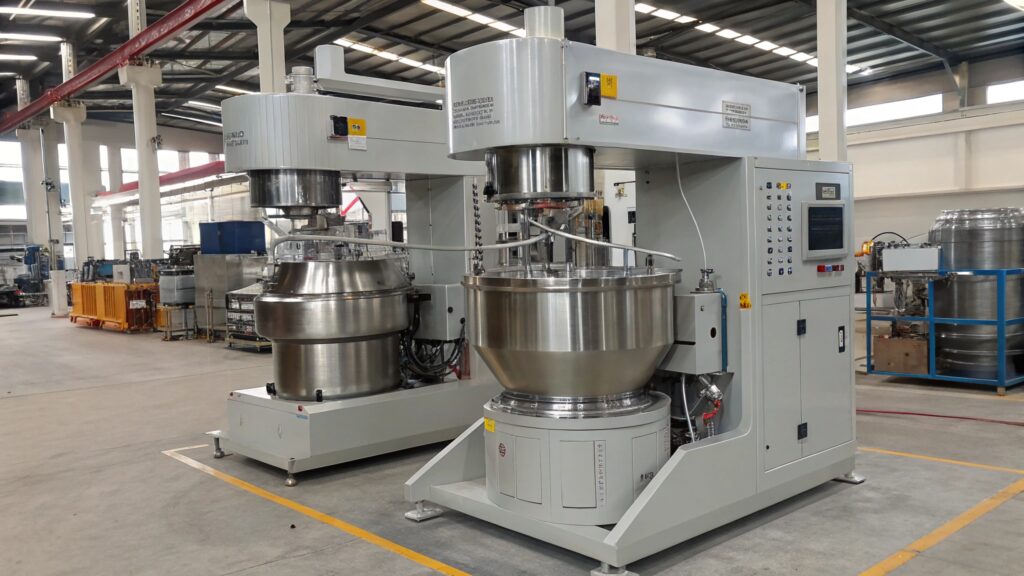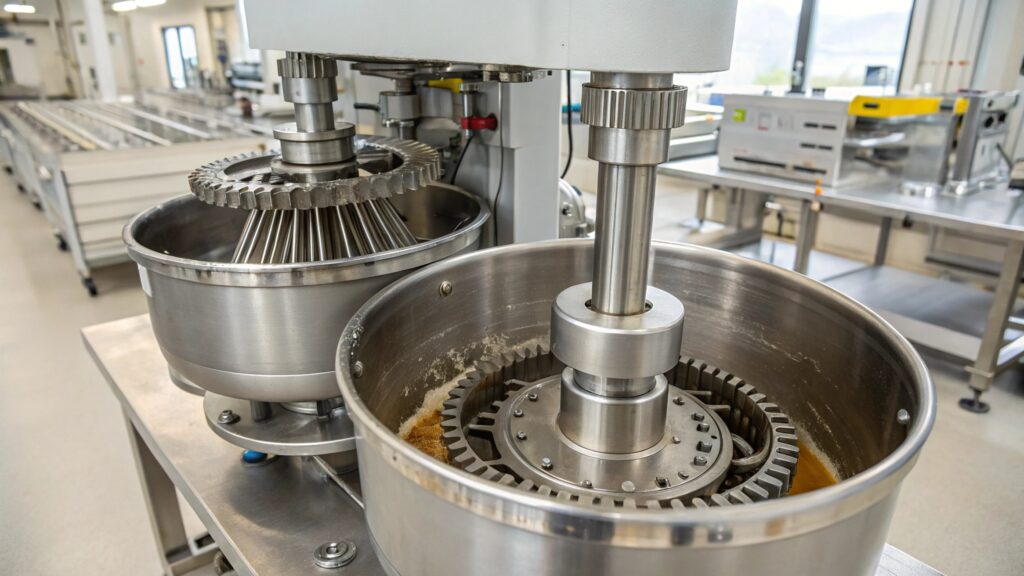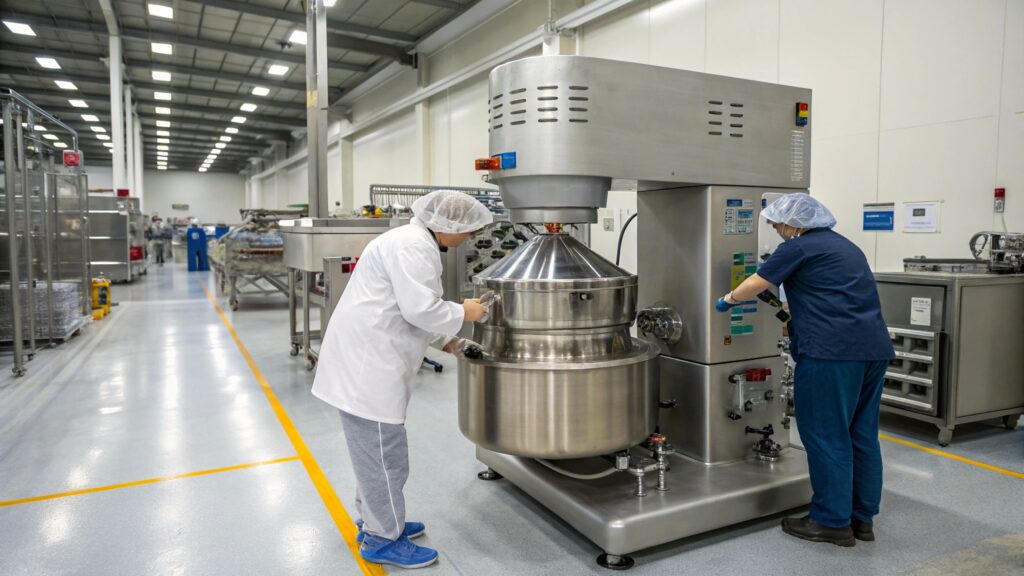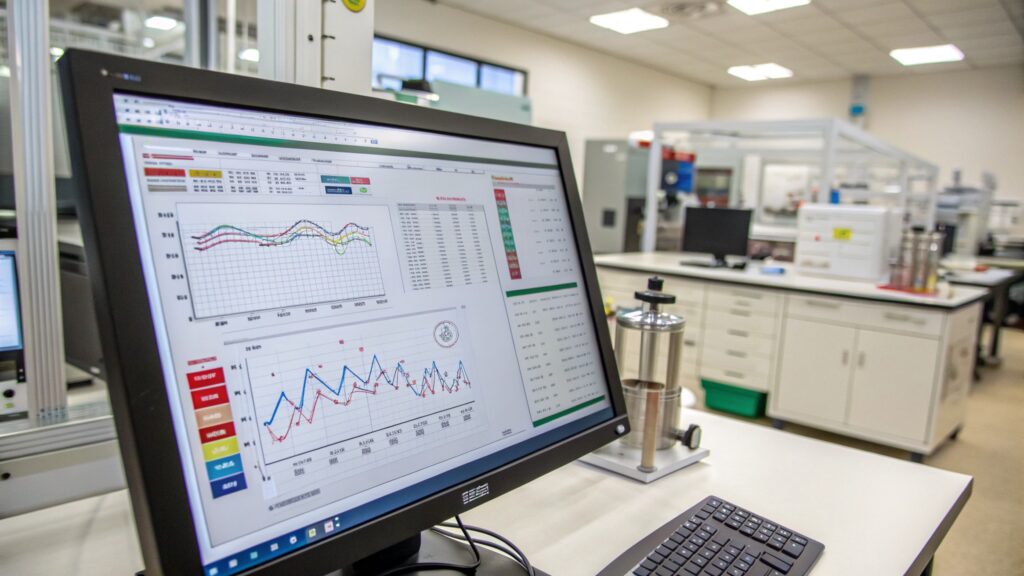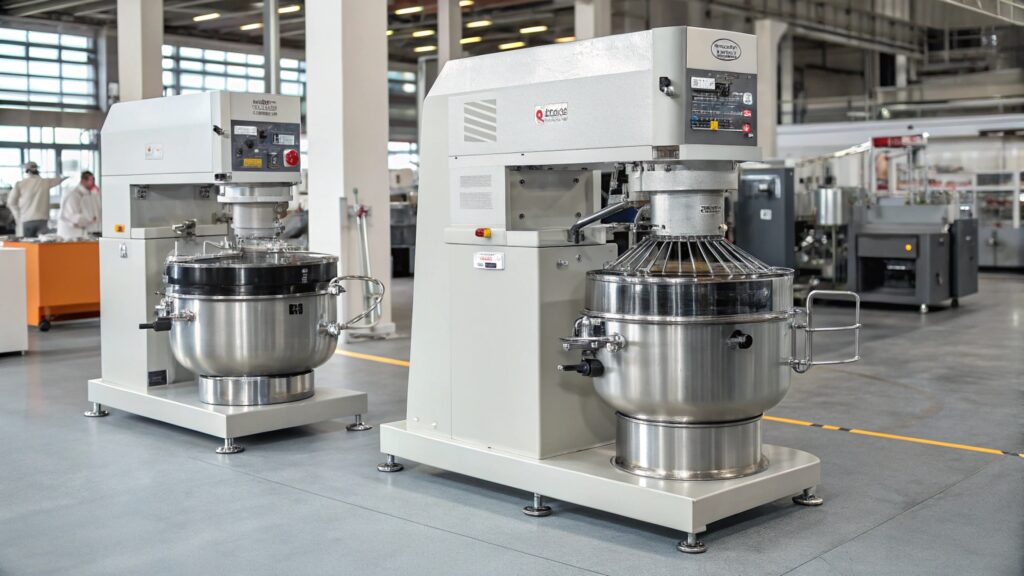Choosing the wrong mixing equipment for high-viscosity materials leads to inconsistent product quality, extended processing times, and costly production failures.
A double planetary mixer uses two rotating blades that orbit around a mixing bowl while spinning on their own axes, creating superior mixing action for high-viscosity materials and paste-like substances.
After a decade of manufacturing mixing equipment at MIXERSTAR, I’ve seen countless companies struggle with inadequate mixing solutions. The double planetary mixer consistently emerges as the most versatile and efficient solution for challenging mixing applications across multiple industries.
How Does the Unique Double Planetary Mixing Mechanism Actually Work?
The double planetary mixer operates through a sophisticated dual-motion system that ensures complete material contact and uniform mixing throughout the entire batch.
Two identical mixing blades rotate on their individual axes while simultaneously orbiting the mixing vessel, creating multiple mixing zones that eliminate dead spots and ensure thorough blending.
I remember demonstrating this technology to a skeptical battery manufacturer who couldn’t achieve consistent lithium slurry mixing with their existing equipment. Within minutes of seeing our double planetary mixer[^1] in action, they understood why their current paddle mixer was failing them.
The mixing action combines two distinct motions that work together seamlessly. Each blade rotates around its own center axis, creating local mixing and shear. Simultaneously, both blades orbit around the bowl’s central axis, ensuring every point in the mixing volume gets contacted multiple times during each cycle.
This dual motion pattern means the blades pass through every point in the mixing zone within just 36 revolutions around the vessel. Traditional single-axis mixers leave unmixed zones that require longer processing times or manual intervention. The planetary motion eliminates these dead zones completely.
| Motion Type | Function | Benefit |
|---|---|---|
| Blade rotation | Local shear and mixing | Breaks down agglomerates |
| Planetary orbit | Complete zone coverage | Eliminates dead spots |
| Combined action | Thorough material turnover | Uniform mixing results |
The blade design varies based on application requirements. High-viscosity blades feature helical contours that create both axial and radial flow patterns. This design prevents material from climbing up the shaft while ensuring complete mixing throughout the bowl volume.
Rectangular blades provide intensive kneading action suitable for paste-like materials. These blades work like hands, folding and pressing the material to achieve homogeneity. The kneading action proves particularly effective for materials that resist conventional mixing approaches.
The vertical orientation eliminates shaft seals and bearings in the product zone. This design prevents contamination while simplifying cleaning and maintenance procedures. Our medium-scale planetary mixers incorporate these design principles for reliable long-term operation.
What Applications Benefit Most from Double Planetary Mixing Technology?
Double planetary mixers excel in applications requiring thorough mixing of high-viscosity, paste-like, or challenging materials that defeat conventional mixing equipment.
Industries processing battery slurries, pharmaceutical ointments, adhesives, sealants, and composite materials rely on double planetary mixers for consistent quality and processing efficiency.
Last year, I worked with a pharmaceutical company struggling to mix zinc oxide ointments with consistent texture. Their existing mixer couldn’t handle the 80% solid content, creating lumps and uneven distribution. Our double planetary mixer[^2] solved this challenge immediately.
Battery manufacturing represents one of the most demanding applications for double planetary mixer[^2]s. Lithium-ion battery electrode slurries require precise mixing to achieve optimal performance. The active materials, conductive additives, and binders must distribute uniformly while maintaining particle integrity.
The vacuum capability of double planetary mixer[^2]s proves essential for battery applications. Air bubbles in electrode slurries create defects that reduce battery performance and lifespan. Vacuum mixing removes these bubbles while preventing oxidation of sensitive materials.
| Industry | Typical Applications | Key Requirements |
|---|---|---|
| Battery | Electrode slurries, electrolytes | Vacuum mixing, particle preservation |
| Pharmaceutical | Ointments, creams, pastes | cGMP compliance, gentle mixing |
| Adhesives | Structural adhesives, sealants | High-viscosity handling, bubble removal |
| Cosmetics | Creams, foundations, lipsticks | Smooth texture, color uniformity |
Pharmaceutical applications demand gentle mixing that preserves active ingredient integrity. Many APIs are shear-sensitive and can degrade under excessive mixing forces. The controlled mixing action of double planetary mixer[^2]s provides thorough blending without damaging sensitive compounds.
Adhesive and sealant manufacturing benefits from the intensive mixing action that ensures complete chemical reaction and uniform properties. Two-part adhesives require perfect mixing ratios and distribution. The double planetary mixer[^2]’s thorough mixing action prevents weak spots that could cause product failures.
Our large industrial mixers serve high-volume production requirements while maintaining the mixing quality that smaller units provide. This scalability allows companies to maintain consistent product quality from R&D through full production.
Why Do Double Planetary Mixers Outperform Traditional Mixing Equipment?
Double planetary mixers deliver superior mixing efficiency, versatility, and process control compared to conventional single-axis mixing systems.
Double planetary mixers achieve complete mixing in fewer revolutions, handle wider viscosity ranges, and provide better process control than paddle mixers, sigma mixers, or single planetary units.
A recent comparison study I conducted showed that double planetary mixers[^3] reduced mixing times by 60% compared to traditional paddle mixers for high-viscosity applications. This efficiency improvement translates directly to increased production capacity and reduced energy costs.
The elimination of unmixed zones represents the primary advantage over single-axis mixers. Paddle mixers create stagnant zones near the vessel walls and bottom corners. These areas require extended mixing times or manual intervention to achieve homogeneity. Double planetary mixers contact every point in the mixing volume multiple times per revolution.
Variable speed control allows optimization for different materials and process stages. Low speeds work well for initial ingredient incorporation, preventing splashing and reducing air entrainment. Higher speeds achieve final dispersion and particle size reduction. This flexibility accommodates diverse process requirements with a single mixer.
| Mixer Type | Mixing Efficiency | Viscosity Range | Process Control |
|---|---|---|---|
| Double Planetary | Excellent | 50-6,000,000 cP | Superior |
| Single Planetary | Good | 100-500,000 cP | Good |
| Paddle Mixer | Fair | 1-50,000 cP | Basic |
| Sigma Mixer | Good | 10,000-10,000,000 cP | Limited |
Vacuum capability sets double planetary mixers[^3] apart from most conventional mixing equipment. The ability to mix under vacuum removes air bubbles, prevents oxidation, and enables processing of foam-sensitive materials. Vacuum levels down to 29.5" Hg (0.1 mbar) are achievable with proper system design.
Temperature control through jacketed vessels maintains optimal processing conditions. Many high-viscosity materials require heating to reduce viscosity for easier mixing. Conversely, some materials need cooling to prevent degradation. Precise temperature control[^4] ensures repeatability between batches.
The changeable bowl design enables semi-continuous operation that significantly increases production throughput. While one bowl is being discharged and cleaned, another can be positioned for the next batch. This approach minimizes downtime and maximizes equipment utilization.
What Design Features Make Double Planetary Mixers Superior for Manufacturing?
Advanced design features in double planetary mixers enhance performance, reliability, and operator safety while meeting stringent manufacturing requirements.
Hydraulic lift systems, interchangeable vessels, vacuum-rated construction, and multiple blade options make double planetary mixers adaptable to diverse manufacturing needs.
The hydraulic lift[^5] system eliminates the need for manual blade removal during cleaning. Operators can raise the mixing blades completely out of the vessel with the push of a button. This feature improves safety while reducing cleaning time and ensuring consistent cleaning procedures.
Interchangeable vessels allow dedication of specific bowls to particular products. This approach minimizes cross-contamination risks while reducing cleaning validation requirements. Pharmaceutical manufacturers often maintain separate bowls for different drug products to prevent cross-contamination completely.
The vacuum-rated construction withstands deep vacuum conditions without compromising structural integrity. Heavy-duty flanges and precision-machined surfaces maintain vacuum seals even under demanding operating conditions. This robust construction ensures long-term reliability in production environments.
| Design Feature | Manufacturing Benefit | Application Advantage |
|---|---|---|
| Hydraulic lift | Easy cleaning access | Reduced downtime |
| Changeable bowls | Semi-continuous operation | Higher throughput |
| Vacuum rating | Bubble-free mixing | Superior product quality |
| Multiple blade types | Process optimization | Wide application range |
Safety features protect operators while ensuring consistent operation. Interlocked guards prevent operation with the bowl improperly positioned. Emergency stops provide immediate shutdown capability. These features meet industrial safety standards while protecting valuable product batches.
The scalability from laboratory to production sizes allows process development and scale-up with identical mixing mechanisms. Our small-scale planetary mixers provide the same mixing action as larger production units. This consistency eliminates scale-up challenges and reduces development time.
Material construction options accommodate diverse chemical compatibility requirements. Standard stainless steel 316L handles most pharmaceutical and food applications. Specialized alloys or coatings address aggressive chemical environments. Our custom mixing solutions can specify optimal materials for specific applications.
Conclusion
Double planetary mixers provide superior mixing performance for high-viscosity materials through their unique dual-motion design and advanced features.
External link
[^1]: Explore this link to understand the innovative design and benefits of double planetary mixers in achieving consistent mixing.
[^2]: Explore this link to understand the mechanics and benefits of double planetary mixers in various industries.
[^3]: Explore the advantages of double planetary mixers, including efficiency and production capacity, to enhance your mixing processes.
[^4]: Discover how precise temperature control can enhance the quality and consistency of your mixed products.
[^5]: Explore this link to understand how hydraulic lift systems enhance safety and efficiency in manufacturing processes.

